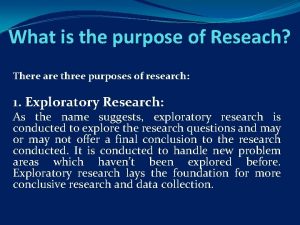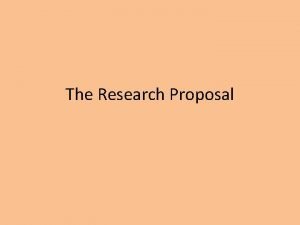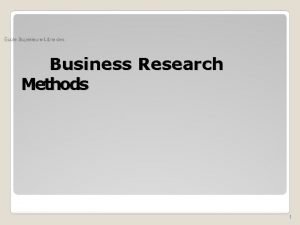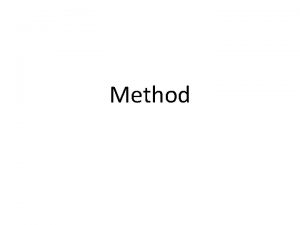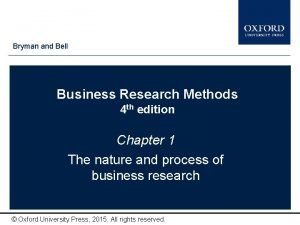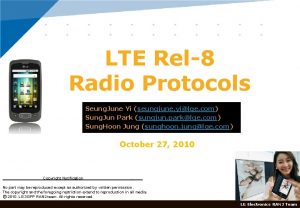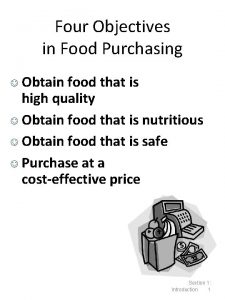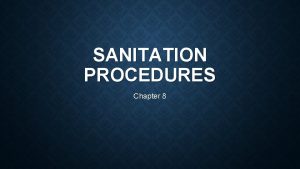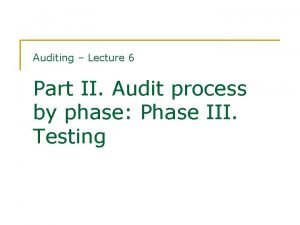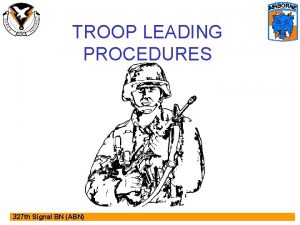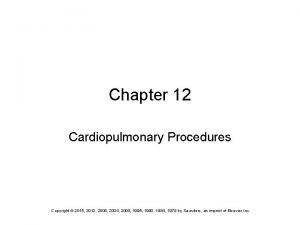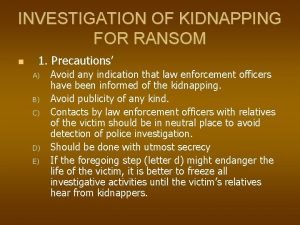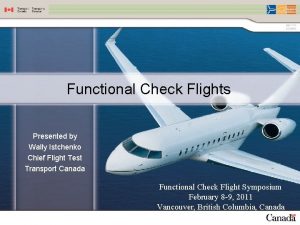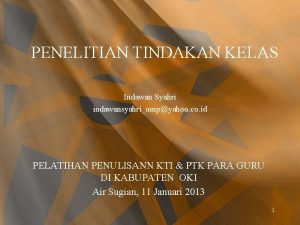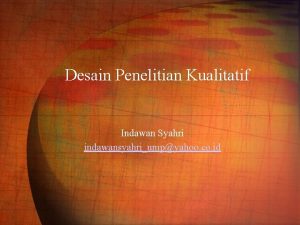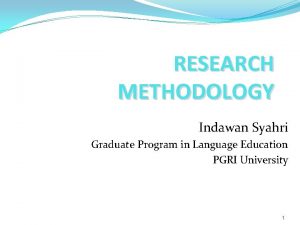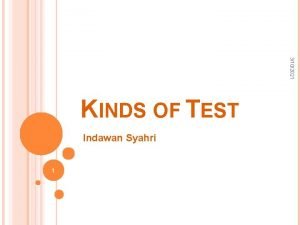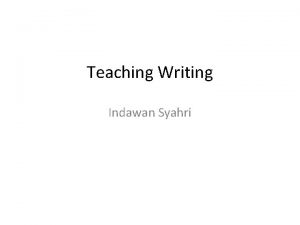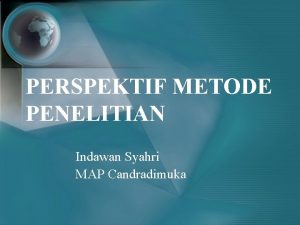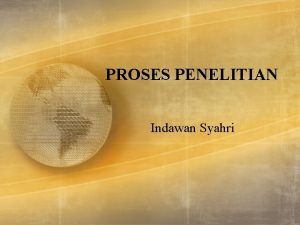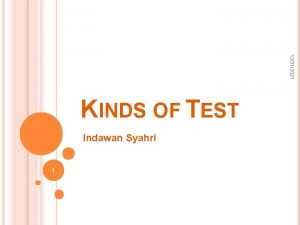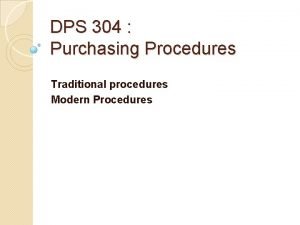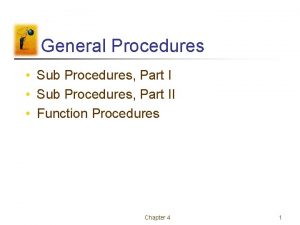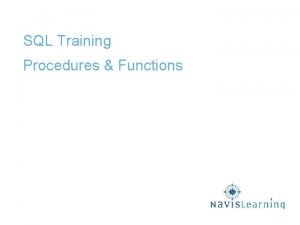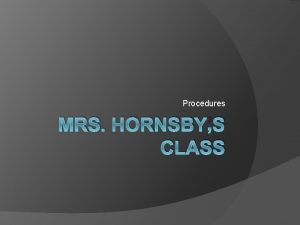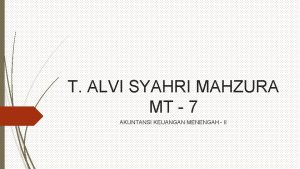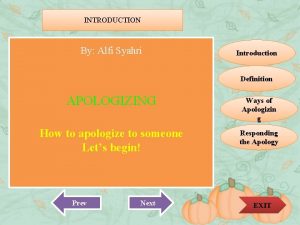RESEARCH PROCEDURES Indawan Syahri indawansyahriumpyahoo co id 1










































- Slides: 42

RESEARCH PROCEDURES Indawan Syahri indawansyahri_ump@yahoo. co. id 1 6/8/2021

III. RESEARCH PROCEDURES A. Research Method B. Research Variables C. Operational Definition D. Population and Samples E. Techniques for Collecting Data F. Techniques for Analyzing Data 2 6/8/2021

A. Research Method �Two types of methods in term of ‘treatment’ or 3 ‘non-treatment’ 1) Experimental method, the researchers do some experiments to verify or testify the tentative theories as formulated in hypotheses 2) Descriptive method, the researchers describe some phenomena that are formulated in research questions. E. g. , Error Analysis in ELT, the researchers finds the data in order to identify the types 6/8/2021 and sources of errors.

Experimental Research 1) Experimental research is unique in two very important respects: � It is the only type of research that directly attempts to influence a particular variable. � It is the only type of research that can really test hypothesis about cause-and-effect relationships. 2) The researchers manipulate the 4 independent variable and observe the effects of dependent variable. 6/8/2021

Types of Experimental Designs 1. Weak Experimental Designs 2. True Experimental Designs 3. Quasi-experimental Designs 4. Counterbalance Designs 5. Time-series Designs 6. Factorial Designs 7. A-B-A Designs 8. Multiple Baseline Designs 5 6/8/2021

Weak Experimental Designs (1) �Do not have built-in controls for the threat to internal validity �A number of explanation for any outcomes that occur �Difficulties assessing the effectiveness of the independent variable. 6 6/8/2021

Weak Experimental Designs (2) 1) The One-shot Case Design a single group is exposed to a treatment, and a dependent variable is subsequently observed (measured) in order to assess the effect of the treatment X Treatment O Observation (dependent variable) 7 6/8/2021

Weak Experimental Designs (3) 1) The One-group Pretest-posttest Design A single group is measured or observed not only after being exposed to a treatment of some sort, but also before. O Pretest 8 X Treatment O Posttest 6/8/2021

Weak Experimental Designs (4) 1) The Static-group Comparison Design � Two already existing or intact groups are used. � These are static group � Comparisons are made between groups receiving different treatments X 1 O ---------------X 2 9 O 6/8/2021

True Experimental Designs (1) Subjects/samples are randomly assigned to treatment groups. 1. The Randomized Posttest Only Control group design � � Both group are randomly assigned One group receive the experimental treatment while the other does not. Treatment Group Control Group 10 R X 1 O --------------R X 2 O 6/8/2021

True Experimental Designs (2) 2. The Randomized Pretest-Posttest Control Group Design � Both groups are randomly assigned � Both groups are given pretest � Both groups are also given posttest Treatment Group Control Group 11 R O X 1 O ------------------R O X 2 O 6/8/2021

True Experimental Designs (3) 2. The Randomized Solomon Four-group Design � Attempt to eliminate the possible effect of a pretest � Random assignment of subjects/samples to four groups � Two of the four groups are given pretest and two are not. Treatment Group R O X 1 O ------------------Control Group R O X 2 O =========== Treatment Group R X 1 O ---------------------12 Control Group O R X 2 6/8/2021

Quasi-experimental Designs (1) �Do not include the use of random assignment �Rely on other techniques to control (or at least reduce) threats to internal validity 1) The matching Only Posttest-only control group Design Treatment Group Control Group 13 M X 1 O --------------M X 2 O 6/8/2021

Quasi-experimental Designs (2) 2) The Matching Only Pretest-posttest Control Group Treatment Group Control Group 14 O M X 1 O -------------------O M X 2 O 6/8/2021

B. Research Variables �An attribute of a person, a piece of text, or an object which varies from person to person, text to text, object to object, or from time to time. �Variables can be very broad or very narrow. �The broader the variable, the more difficult it may be to define, locate, and measure accurately. �Variables can be assigned to groups of people as well as individuals. 15 6/8/2021

Measurement of Variables �When variables are of the all-or- nothing, yes/no sort, we cannot measure how much of the variable to attribute to the person, text, or object. So how? �Variables will be quantified in different ways depending on whether we want to know how often an attribute is present or how much of the variables to attribute to the person, text, or text. 16 6/8/2021

Nominal Scale Variables �A nominal variable names an attribute or category and classifies the data according to presence or absence of the attribute. �The classification numbers have no arithmetic value, e. g. , in yes/no notation, 1 represents yes and 2, no. and in south Sumatra dialects, 1=Palembang, 2=Lahat, 3=Komring, 4=others. �There is no reliable method of measuring the degrees, e. g. , of how much happiness one possesses at any moment. 17 6/8/2021

Ordinal Scale Variables �An ordinal scale variable shows how much the variable attributes a person, text, or object in term of degree. �E. g. , the variable happy can be measured in term of degree of happiness; very unhappy—happy– very happy �Most researchers prefer to use a 5 -point, 7 -point or 9 -point scale �You may use a Likert-type scale to tap students attitudes: The lesson were boring 1 2 3 4 5 6 7 18 6/8/2021

Interval Scale Variables �An interval scale tell us how much of the variable to attribute a person, text or object which more precise measurement. �The intervals of measurement can be described. �Each interval unit has the same value so that units can be added or subtracted. �E. g. , the difference in intervals between 1 and 10 in a test of 100 items. 19 6/8/2021

Frequency Data vs. Score Data �Another way to think about difference in measurement is to consider whether the study measures how much on an interval or ordinal scale or whether it measures how often something occurs– the frequency of nominal measurement. �This distinction is important because it will determine the appropriate statistical analysis to use with the data. 20 6/8/2021

Functions of Variables �To understand how the variables in a study relate to one another, we need to be able to identify their functions. �Functions grow out of the RQ. �Functions depend on the connection we believe exists between the variables we have chosen to study. �One variables are expected to be related to one another or one affects the others. 21 6/8/2021

Dependent Variable (DV) �The dependent variable is the major variable that will be measured in the research. �E. g. , the construct communicative competence (CC) of a group of students, the dependent variable is the construct and it might be operationalized as the students’ scores or ratings on some measure of CC. �We expect the performance on the dependent variable will be influenced by other variables. 22 6/8/2021

Independent Variable (IV) �An independent variable is a variable that the researcher suspects may relate or influence the dependent variable. �E. g. , if we want to know something about CC of students, the dependent variable is the score for CC. We might believe that the male and females students differ on this variable. So we can assign gender as the independent variable. 23 6/8/2021

Moderator Variable (MV) �Some researchers makes a distinction between IV and MV, others call them both IVs since they influence variability in the DV. �Specifying variables as “independent” and “moderator” helps us study how moderating variables mediate or moderate the relationship between the IV and DV. �E. g. , we believe that gender as IV is the most important variable to look at L 2 compliments, but we observe that length of residence suspected to influence the DV can be considered as MV 24 6/8/2021

Control Variable (CV) �CV is a variable that not of central concern in a particular research project but which might affect the outcome. �It is controlled by neutralizing its potential effect on the DV. �E. g. , if you assume that handedness can affect the Ss’ respond in many task, you can institute a control by including only righthanded Ss in your study �Remember when you control in this way, you limit the generalizability of your study. 25 6/8/2021

C. Operational Definition �To define the key words in the title and variables �The definitions should be specific to the study �The definitions should be precisely clear, not ambiguous. �The definitions are different from theoretical ones. 26 6/8/2021

D. Population and Samples �A population is the group to which the results of the study are intended to apply. �A sample is a group in a research study on which information is obtained. �In almost all research investigations, the sample is smaller than the population, since the researcher rarely have access to all the members of the population. 27 6/8/2021

Why use samples? �Although the best data comes from studying an entire population, samples are used because they are smaller and less unwieldy. �It can be too time consuming and expensive to study an entire population 28 6/8/2021

Defining the Population �Population: the universe of events from which the sample is drawn. �Population: group that a researcher is trying to represent. �Study a subset of the population because it is cheaper, faster, easier, and if done right, get same results as a census (study of whole population). �Accessible population – the group you are able to realistically generalize to. 29 6/8/2021

Simple Random Sampling Stratified Random Sampling Cluster Random Sampling Two-stage Random Sampling Forms of Sampling Systematic Sampling Non-random Sampling Purposive Sampling Convenience Sampling 30 6/8/2021

Simple Random Sampling �A simple random sample is one in which each and every member of the population has an equal and independent chance of being selected. ABCDE FGHIJKLM NOPQRST VWXYZ 31 Population C FIL N Z Simple Random 6/8/2021

Stratified Random Sampling �Stratified random sampling is a process in which certain subgroups, or strata, are selected for the sample in the same proportion as they exist in the population. ABCDE 25% 32 FGHIJKL M NOPQRST 50% VWXYZ 25% Population CD FILJ WZ Stratified Random 6/8/2021

Cluster Random Sampling �Cluster random sampling is similar to simple random sampling except that groups rather than individuals are randomly selected. AB C EF G HI PQ R 33 JK L TV W Population MN O TV W E F G JK L XY Z Cluster Random 6/8/2021

Two-stage Random Sampling �Two-stage random sampling is to combine cluster random sampling with individual random sampling. Sample of Clusters AB C HI PQ R EF G JK L TV W Population 34 MN O XY Z TV W EF G JK L Sample of Individuals E. L. W. Two-Stage Random 6/8/2021

Systematic Sampling �In a systematic sample, every nth individual in the population list is selected for inclusion in the samples A F K P V B C D E GG H I J L M NO Q R S T Q W X YZ W Easily Accessibl e BGL QW Systematic Population 35 6/8/2021

Purposive Sampling �On occasion, based on previous knowledge of a population and the specific purpose of the research, investigators use personal judgment to select a sample. AB C DE C FGHIJKL G M R NOPQRST VW WXYZ Equally Qualified C G R W Purposive Population 36 6/8/2021

Convenience Sampling �A convenience sample is a group of individuals who (conveniently) are available for study. ABCDE F G H I J K LM QQ RRST NOP VS WTXXY Z Easily Accessible QR ST XY Y Population 37 Convenienc e 6/8/2021

E. Techniques for Collecting Data 1. Observation 2. Interviews 3. Questionnaires 4. Tests 5. Documentation 38 6/8/2021

Instrumentation (1) �The process of preparing to collect the data 39 called instrumentation. �It involves the selection of method/technique by which data will be collected, as well as the procedures and conditions for collecting them. �Key questions in data instrumentation and measurement �Where will data be collected? �When will data be collected? �How often will data be collected? �Who will collect the data? 6/8/2021

Instrumentation (2) �Validity – measures what it is supposed to 40 (accurate) or the defensibility of the inferences a researcher can make from a study using an instrument. �Reliability – a measure that consistently gives same reading (repeatable). �Objectivity – absence of subjective judgment or the absence of subjective biases on the part of the researcher. �Usability of instrument – consider ease of administration; time to administer; clarity of 6/8/2021 direction; ease of scoring; cost;

F. Techniques for Analyzing Data �The stages of analyzing data depend on what problems formulated of question arisen. �E. g. , in experimental studies, the researcher can do the following steps: 1. Data distributions Frequency of pretest scores b. Frequency of posttest scores a. 2. Comparisons between pretest and posttest scores Paired sample t-test b. Independent sample t-test a. 41 6/8/2021

Thank you indawansyahri_ump@yahoo. co. id 42 6/8/2021
 Yacheng sun
Yacheng sun Projective test advantages and disadvantages
Projective test advantages and disadvantages Projective techniques
Projective techniques Exploratory research quantitative
Exploratory research quantitative Qualitative research plan
Qualitative research plan Conclusive research
Conclusive research Longitudinal research and cross sectional research
Longitudinal research and cross sectional research Eight characteristics educational research
Eight characteristics educational research What is appendices in research example
What is appendices in research example Purpose of reseach
Purpose of reseach Contrast applied research and basic research
Contrast applied research and basic research Exploratory research design types
Exploratory research design types Research chapter 3 parts
Research chapter 3 parts Corelational study
Corelational study Advantages and disadvantages of conclusive research design
Advantages and disadvantages of conclusive research design Quantitative emphasis
Quantitative emphasis Sources of research problem
Sources of research problem Purpose of the study in research proposal example
Purpose of the study in research proposal example Research report vs research proposal
Research report vs research proposal Applied vs fundamental research
Applied vs fundamental research Scope of research definition
Scope of research definition Practical research inquiry
Practical research inquiry Research paradigm example
Research paradigm example Research instrument in experimental research
Research instrument in experimental research Methods versus methodology
Methods versus methodology Bryman bell
Bryman bell Search for unrecorded liabilities audit procedures
Search for unrecorded liabilities audit procedures Troop leading procedures army
Troop leading procedures army Lte nas procedures
Lte nas procedures Mue table explanation
Mue table explanation Food objectives
Food objectives Safe lab procedures and tool use
Safe lab procedures and tool use Chapter 8 sanitation procedures
Chapter 8 sanitation procedures Data gathering procedures example
Data gathering procedures example Atc communications and radio procedures
Atc communications and radio procedures Analytical procedures examples
Analytical procedures examples Army tlps
Army tlps Crossword puzzle cardiopulmonary procedures
Crossword puzzle cardiopulmonary procedures Kyc audit procedures
Kyc audit procedures Kidnap for ransom investigation
Kidnap for ransom investigation Chapter 10 workplace safety procedures
Chapter 10 workplace safety procedures Functional check flight procedures
Functional check flight procedures Unmasking procedures
Unmasking procedures









